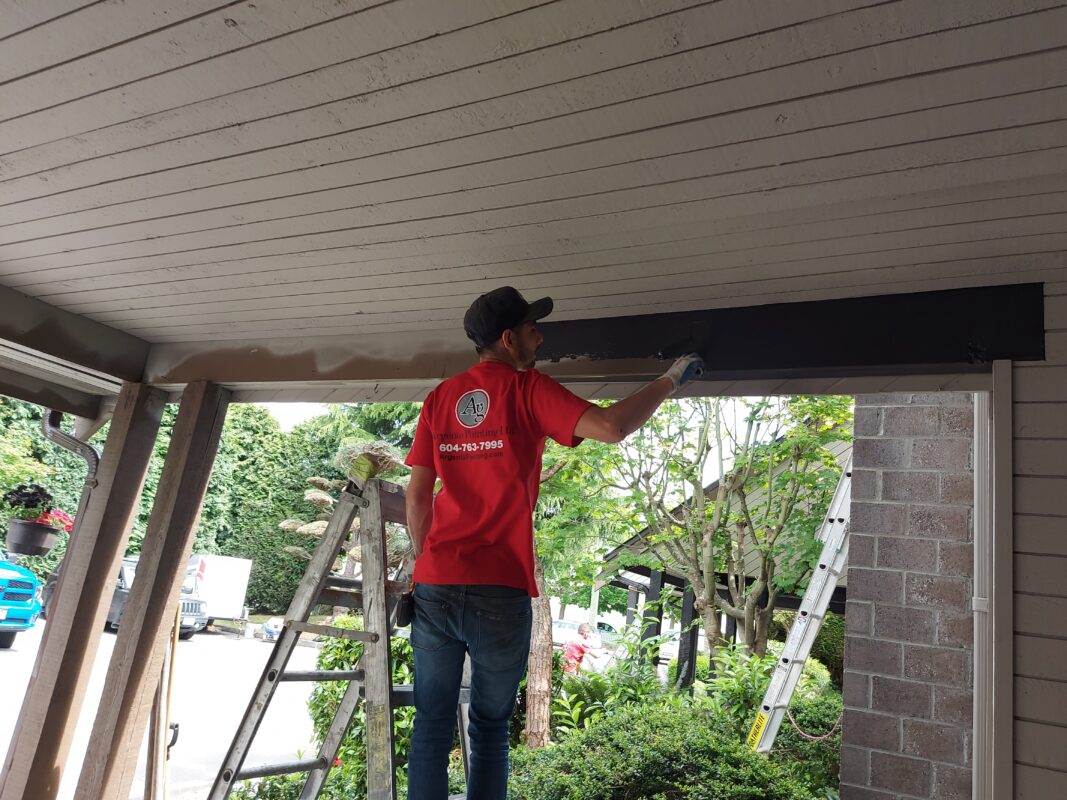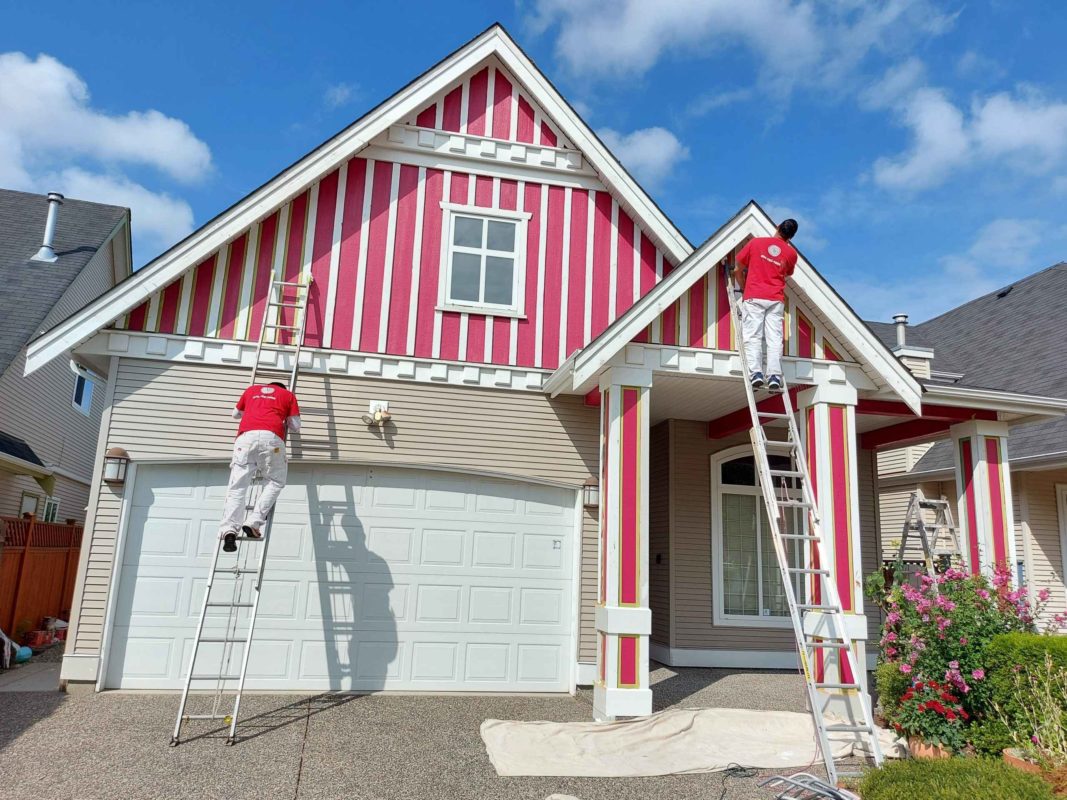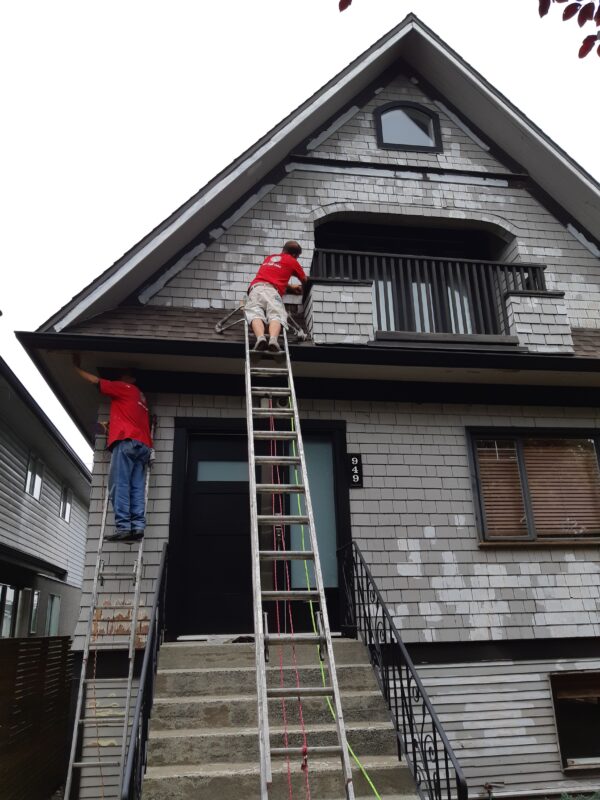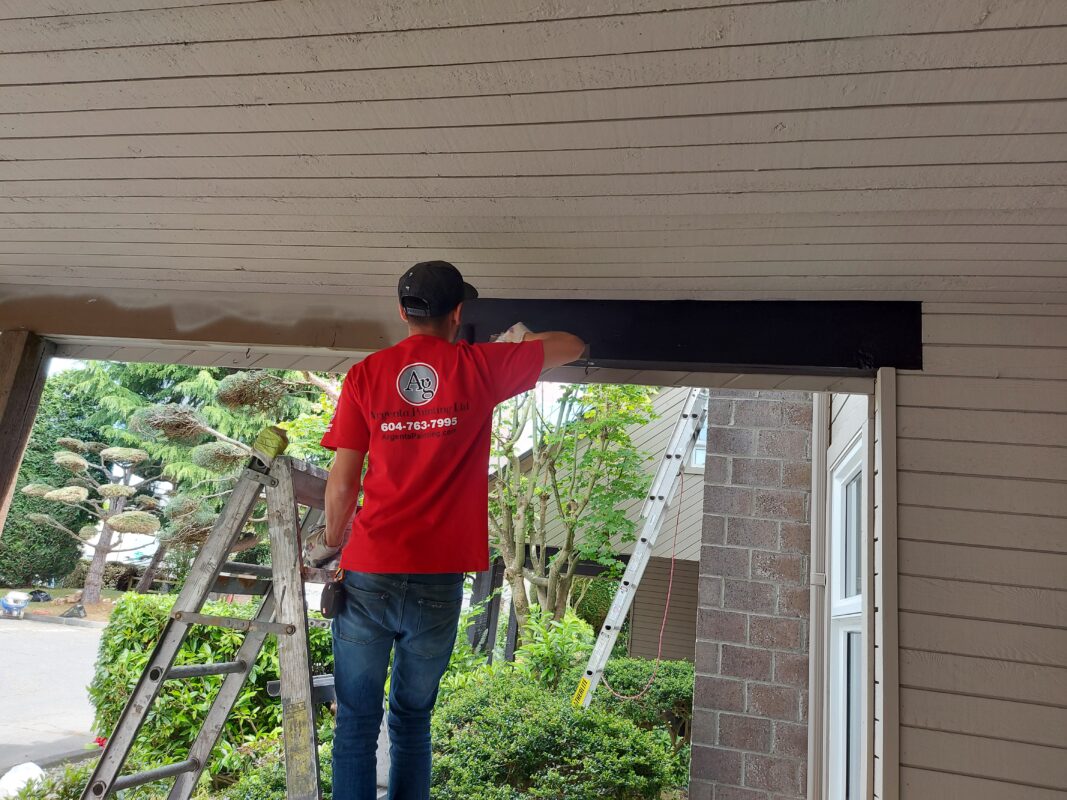What Paint Can’t Fix: The Hidden Risks of Relying on Cosmetic Repairs for Exterior Damage
A fresh coat of paint can do wonders for your home’s exterior. It’s one of the fastest ways to boost curb appeal, refresh weathered surfaces, and give your property a clean, updated look. For many homeowners, paint seems like the perfect solution for quick cosmetic repairs.
But while paint can cover up surface flaws and discolouration, it can’t fix what’s happening underneath. Structural damage, moisture intrusion, and rotting materials all require more than just a brush and a bucket.
In this blog, we’ll explore the real limits of cosmetic repairs for exterior surfaces—what paint can improve, what it can’t cover up, and when it’s time to call in a professional for proper repairs that last.
What Paint Can Fix
Paint is a powerful tool when it comes to enhancing the appearance of your home. When used correctly, it can take care of several minor imperfections and give your exterior a polished, well-maintained look. Here are a few things that cosmetic repairs for exterior surfaces—using paint—can successfully address:

-
Minor surface flaws – Small scratches, slight scuffs, and general wear and tear can be easily concealed with a fresh coat of paint.
-
Fading and dullness – Sun exposure and weathering often cause exterior surfaces to lose vibrancy over time. Repainting can restore colour and brightness.
-
Stains and discolouration – Paint can cover up water stains, rust marks, and other surface-level blemishes caused by aging or environmental exposure.
-
Uniformity and curb appeal – Even if your home is structurally sound, uneven paint or patchy areas can make it look neglected. A well-done paint job creates a clean, consistent appearance and improves first impressions.
When done properly, cosmetic repairs for exterior surfaces using paint can significantly enhance your home’s curb appeal—just keep in mind that paint is not a fix-all solution.
What Paint Can’t Fix
While paint can refresh your exterior visually, it can’t solve deeper issues lurking beneath the surface. Relying on cosmetic repairs for exterior damage without addressing the root cause often leads to more serious and expensive problems down the road.
Here’s what paint won’t fix:
-
Structural damage – If wood is rotting, siding is broken, or trim is falling apart, no amount of paint will restore its strength. These materials need to be repaired or replaced before painting can even begin.
-
Moisture or mould issues – Painting over damp areas or mould just seals the problem inside. Moisture trapped beneath paint can cause blistering, peeling, and even spread decay beneath the surface.


-
Cracks or holes – Paint might make small flaws less noticeable, but it won’t fill in or repair damage in drywall, stucco, or trim boards. Those areas need to be patched properly for lasting results.
-
Warped or swollen materials – Warping, swelling, or soft spots are often signs of water damage. Painting over them can hide the symptoms temporarily, but the material will continue to deteriorate.
In short, cosmetic repairs for exterior surfaces should never be used to hide real damage. Addressing the underlying problem is always the first step toward a lasting solution.
Risks of Relying Solely on Paint
Using paint as a quick fix might seem like an easy solution, but treating serious issues with only cosmetic repairs for exterior surfaces can do more harm than good. Without proper preparation and repair, you’re simply covering up problems—not solving them.
-
Traps moisture and accelerates decay – Painting over damp or rotting areas seals in moisture, which can cause wood and other materials to break down even faster beneath the surface.
-
Short-lived results – When paint is applied over damaged or unstable surfaces, it’s likely to peel, bubble, or fade much faster, requiring more frequent repainting and maintenance.


-
Conceals worsening problems – Paint can temporarily hide issues like cracks, mould, or soft spots, allowing them to spread unnoticed and cause further structural damage.
-
Impacts warranties and resale value – If hidden damage is discovered later—especially during a home inspection—it could void workmanship warranties, reduce your property’s value, or even delay a sale.
That’s why cosmetic repairs for exterior surfaces should never replace proper inspection and professional repair. A solid foundation always comes first.
When to Inspect Before Painting
Before starting any cosmetic repairs for exterior surfaces, it’s essential to take the time to inspect your home for underlying issues. A fresh coat of paint will only be effective—and long-lasting—if the surface beneath is sound.
Here are a few signs that an inspection is necessary:
-
Rot, peeling, or bubbling paint – These are classic indicators that moisture may be trapped under the surface or that existing rot is present. Painting over them without proper repair will only worsen the issue.
-
Previous water damage or leaks – If your home has experienced past leaks from the roof, gutters, or windows, check nearby trim, siding, or stucco for softness, staining, or mould before repainting.
-
Soft wood, sagging trim, or surface irregularities – Gently press on your trim and siding to feel for softness. Any sponginess, uneven texture, or misaligned boards may signal deeper problems that paint can’t fix.

Proper inspection before starting cosmetic repairs for exterior areas ensures you’re not just hiding problems—but resolving them.
When to Call a Professional
While some small imperfections can be handled with a bit of sanding and paint, more serious issues require an expert eye. Not all cosmetic repairs for exterior problems are what they seem on the surface.

You should contact a professional if:
-
The damage goes deeper than surface flaws – Cracks, spongy trim, or persistent stains may point to hidden rot or water damage that paint alone won’t resolve.
-
Multiple layers of paint have been applied over time – Excessive buildup can mask underlying deterioration and may prevent new paint from adhering properly.
-
You see signs of wood rot, shifting trim, or water intrusion – These are clear indicators of structural issues that need to be repaired before any cosmetic work is done.
If you think your home needs more than a touch-up, and you’re looking for reliable cosmetic repairs for exterior surfaces, call Argenta Restoration Ltd. Check out our video, “Argenta Painting: The Best Option for Your Home Transformation!!” to see why we’re the right team for the job.
While paint can dramatically improve the look of your home, it’s important to know the difference between cosmetic repairs for exterior surfaces and the repairs that truly protect your property. A flawless finish means little if the material underneath is damaged or deteriorating.
Before you pick up a brush, take time to inspect your home for signs of deeper issues like rot, water damage, or structural wear. Addressing these problems first ensures that your investment in painting pays off in both appearance and durability.

Call a Professional
If you’re unsure whether your home needs repairs before painting, don’t guess—contact Argenta Restoration Ltd. We offer professional assessments, expert rot repair, and high-quality painting services designed to deliver lasting results.

